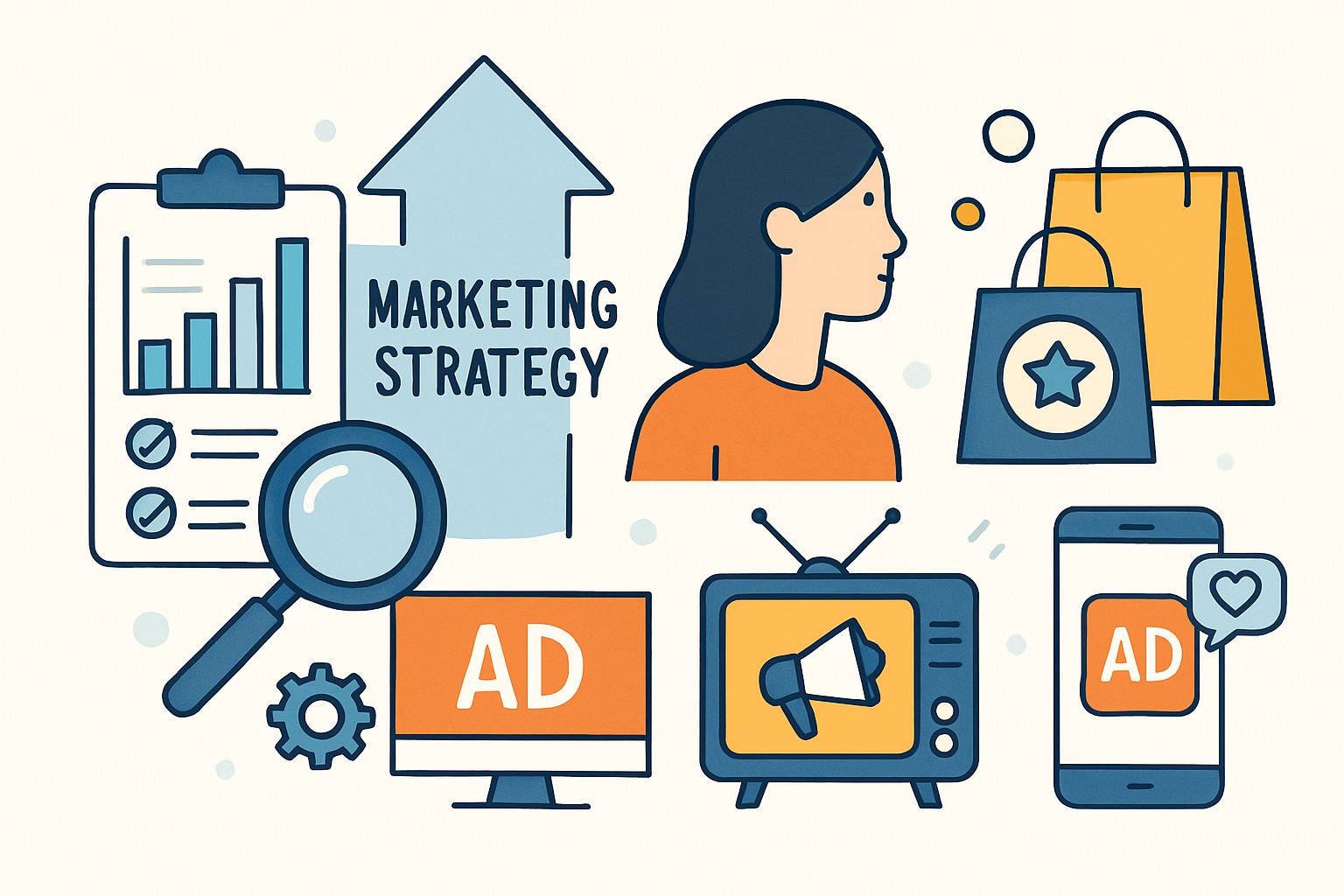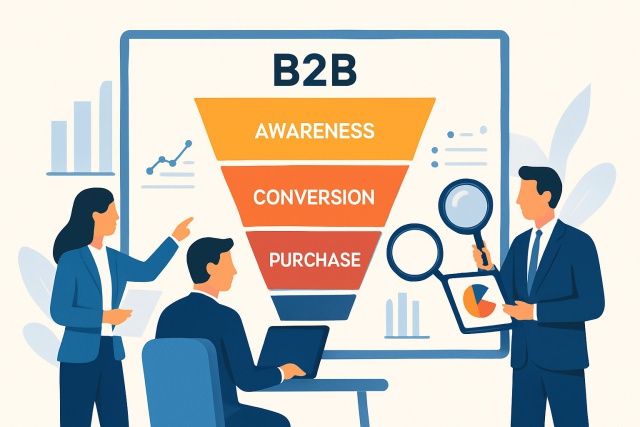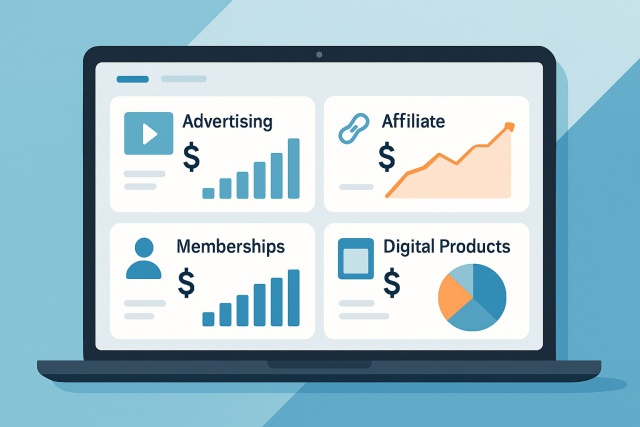Marketing vs Advertising - Key Differences Explained


People often get marketing and advertising tangled up, even though they each have their own distinct part to play in growing a business. This article breaks down their key differences, showing how marketing steers the overall strategy while advertising acts as the hands-on approach to reaching out and connecting with customers.
What Marketing and Advertising Really Mean
Marketing covers a whole spectrum of activities and strategies from diving into market research to understanding what makes customers tick. Then it involves crafting ways to deliver real value.
- Marketing is a broad business strategy that covers all the parts involved in delivering value to customers.
- It often relies on market research to understand customer preferences and competition.
- Marketing aims to pinpoint target audiences and segments so messages and offers feel personalized.
- Advertising is a paid shout-out designed to send a clear, catchy message that reels in customers.
- It typically rolls out in campaigns with clear start and finish lines and focuses on specific products or special deals.
- Advertising uses channels like TV, social media, print and online ads to reach a large crowd or a tight-knit niche.
Important Differences Between Marketing and Advertising (And Why They Actually Matter)
Marketing and advertising differ in their scope and goals and how they’re carried out. Marketing usually takes the long view and focuses on building a brand over time while nurturing customer relationships. Advertising, by contrast, is often about making a quick splash with short-term promotions designed to get sales moving fast.
| Category | Marketing | Advertising |
|---|---|---|
| Scope | A broad game plan that covers the whole business, leaving no stone unturned | More focused promotional pushes within marketing’s bigger picture |
| Purpose | Build the brand, get to know the market inside out, and nurture leads patiently | Create a buzz to raise awareness and spark immediate sales |
| Duration | Ongoing, usually playing the long game | Typically short to medium bursts tied to specific campaigns |
| Channels Used | SEO, content marketing, email, events, social media—all the usual suspects | TV, radio, print, pay-per-click, social media ads—channels that pack a punch |
| Cost | Can vary wildly; think research, content creation, and all the behind-the-scenes work | Mostly the price of grabbing paid media spots and crafting catchy creatives |
| Measurability | Often tracked with KPIs like brand awareness and customer loyalty, which aren’t always straightforward but tell a story | Measured more directly through ad metrics such as click-through rates and conversions |
| Examples | Market research, product positioning, customer relationship management—basically the kitchen sink | TV commercials, Google Ads, sponsored social posts, the flashy stuff everyone notices |
This table shines a light on marketing as the bigger strategic picture covering activities like market research and customer relationship management (CRM). Advertising fits snugly within this realm as the more tactical side focused on delivering promotional messages and often keeping a close eye on measurable results like click-through rates. A company might lean on marketing to craft its brand identity and target audiences. Then it launches advertising campaigns via social media or TV to give product sales a quick jolt.
How Marketing and Advertising Work Hand in Hand
Marketing and advertising go hand in hand with advertising playing a starring role in the bigger marketing picture. Marketing lays the groundwork by zeroing in on target audiences and shaping the messaging. Advertising takes the baton and runs with it, bringing those messages to life in a sharp and persuasive way that turns casual prospects into loyal customers.
- Marketing is all about diving into the market to catch emerging trends and really get what customers are craving while keeping a sharp eye on the competition.
- It involves crafting product development that hits customer expectations and plays nicely with bigger business goals.
- Marketing cooks up branding strategies that do more than just sell—they build emotional bonds with the audience.
- It zeroes in on managing customer relationships to boost loyalty and create long-lasting value.
- Advertising whips up targeted campaigns designed to ramp up brand awareness fast.
- It crafts compelling messages aimed at sparking interest and nudging people into action.
- Advertising smartly uses audience segmentation to reach the right individuals at the right moment.
- It gives a leg up to sales promotions like discounts, events or launches to drive immediate results.
Imagine a company gearing up to launch a shiny new product. The marketing team dives into researching what customers really want and digs through preferences like detectives on a mission. Then they tailor the product to fit those insights perfectly and spin a brand story that hopefully sticks. Meanwhile, the advertising crew jumps in and pieces together digital ads on Facebook and Google targeting just the right people.
Common Misunderstandings About Marketing and Advertising
There’s often a fair bit of confusion swirling around when it comes to marketing and advertising which leads many individuals to mix up their roles. Advertising is really just one slice of the marketing pie. Marketing itself is a constantly evolving, intricate dance that goes way beyond just slapping up ads.
- Marketing isn’t just about slapping up ads. It also involves research, product development and pricing plus many other behind-the-scenes tasks.
- PR focuses mainly on earning media coverage rather than paid ads you see everywhere.
- Advertising rarely creates instant sales magic. Instead it plants the seed of awareness that gradually grows into actual purchases over time.
- Marketing efforts don’t stop once the ads go live. They continue working to nurture leads and ensure customers stay loyal for the long term.
Think of marketing like planning a vacation — you’re picking the destination, figuring out the budget, and deciding what fun stuff to do along the way. Advertising, on the other hand, is more like actually booking the flight and hotel, the down-to-earth steps that turn those daydreams into reality.
Real-World Examples of Marketing and Advertising That Actually Work
To get a handle on how these two play their parts—different yet perfectly in sync—let’s dive into some real-world examples. Marketing usually means rolling up your sleeves to build a brand identity and getting to know your audience inside and out. It also involves piecing together a content strategy that feels just right. Advertising, on the other hand, brings that groundwork to life with targeted campaigns like digital ads, TV commercials or sponsored posts. These campaigns support marketing’s big picture and chase clear, measurable results.
A marketing team really gets their hands dirty by diving deep into what customers actually need and then whipping up a content strategy that genuinely adds value across blogs and social media.
An advertising campaign rolls out targeted Facebook ads and eye-catching TV commercials to push a seasonal sale. This quickly drives traffic and boosts conversions.
When launching a new product, marketing gathers honest customer feedback and crafts a compelling story that resonates. Advertising jumps in with a savvy multi-channel campaign featuring Google search ads and influencer partnerships to widen the net and pack a stronger punch.

Infographic illustrating the relationship and differences between marketing strategy and advertising campaigns
When to Choose Marketing or Advertising (and Why It Actually Matters)
All those moving pieces keep things interesting. Marketing usually sets the stage and plays the long game by nurturing growth over time. Advertising tends to kick in with a splash aiming for quick wins in sales and visibility.
- Kick things off with marketing when launching a business to really nail down your brand and get a genuine feel for who your audience is.
- Lean on marketing to nurture those relationships and slowly build up solid loyalty—it’s a bit like tending a garden really.
- When you’ve got a hot offer, a sale or an event that simply can’t wait, advertising steps into the spotlight to grab attention fast.
- Advertising often shines when you want to bump up sales quickly or roll out new products with a splash.
- Mixing marketing and advertising strikes a sweet spot and creates a balanced approach that fuels steady growth, boosts brand value and gently nudges those all-important conversions.
- Make sure to plan your budget thoughtfully. Let marketing handle behind-the-scenes work like research and brand building while advertising takes the lead on paid campaigns that pack a punch.
Frequently Used Tools and Channels in Marketing and Advertising
When it comes to navigating the ever-evolving world of marketing and advertising, certain tools and channels have become trusty sidekicks for professionals far and wide. These go-to options help cut through the noise, grabbing attention and keeping brands top of mind. Whether you’re a seasoned veteran or just dipping your toes in, knowing these staples can make all the difference.
Marketing and advertising rely on a variety of tools and channels that often overlap, yet each tends to play its own distinct role.
| Marketing Tools/Channels | Advertising Tools/Channels |
|---|---|
| SEO and keyword research (think Moz, Mangools) | Paid social media ads (Facebook, Instagram) |
| Content marketing (blogs, ebooks, videos) | Pay-per-click campaigns (Google Ads) |
| Email marketing and automation | Traditional media ads (TV, radio, print) |
| Analytics and CRM platforms | Influencer sponsorships and endorsements |
| Event marketing and webinars | Sponsored posts and native advertising |
| Organic social media engagement | Retargeting and display ads |
Key Metrics in Marketing and Advertising That Actually Matter
Measuring success in marketing and advertising involves using different metrics that really fit their unique goals. Marketing metrics usually zoom in on the long-term health of a brand and nurturing customer relationships, while advertising metrics keep a sharper eye on how campaigns perform and the immediate reactions they spark.
- Marketing metrics cover brand awareness and customer lifetime value and engagement rates and market share—the heavy hitters that show how your brand is holding up over time.
- These numbers tend to reveal the slow and steady sticks in the brand’s growth story.
- On the flip side, advertising metrics zoom in on click-through rates, cost per acquisition, impressions and conversion rates giving you a quick snapshot.
- They’re great for getting a real-time feel of how a campaign’s humming along.
- Measuring marketing success often takes months or sometimes even years before the full picture comes into focus—patience definitely pays off here.
- Advertising results, meanwhile, are usually checked out during or right after the campaigns do their thing so you’re not left hanging.
- Putting both sets of metrics side by side paints a much clearer picture of overall business performance—like seeing both the forest and the trees.
- Tools like Moz and Mangools come in handy for tracking keyword performance lending solid insights that support both marketing and advertising efforts.
Unlock Digital Marketing Success with Moz
Struggling to optimize your online presence? Moz is the ultimate Internet Marketing solution, empowering businesses with powerful SEO tools, insightful analytics, and expert guidance. Elevate your digital strategies and outshine the competition.
- Boost organic traffic with data-driven SEO tactics
- Enhance content marketing with expert recommendations
- Gain a competitive edge with comprehensive link analysis








